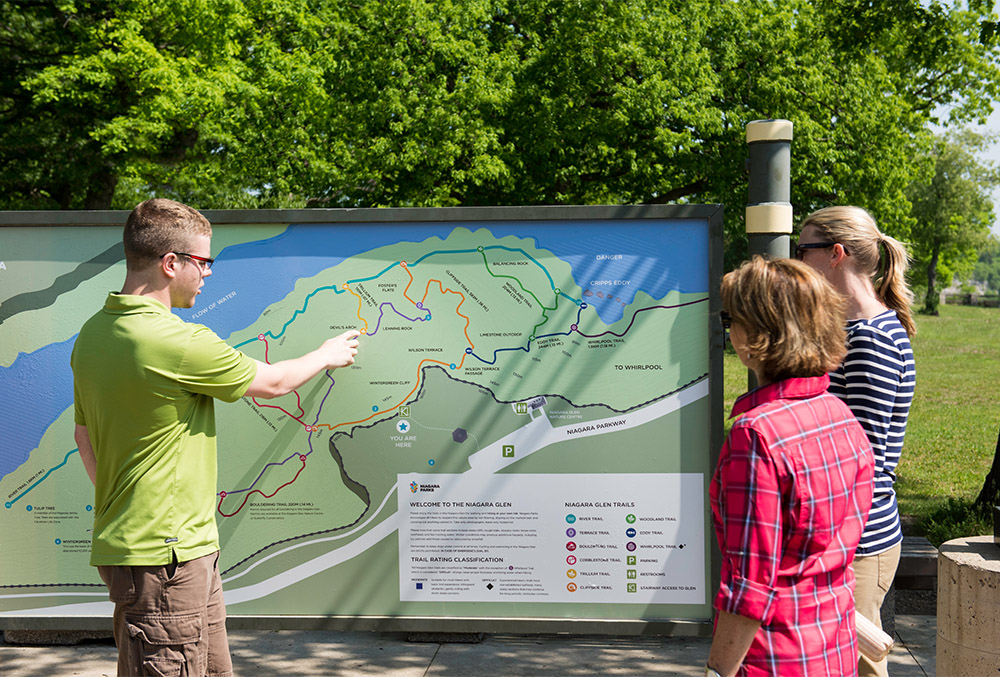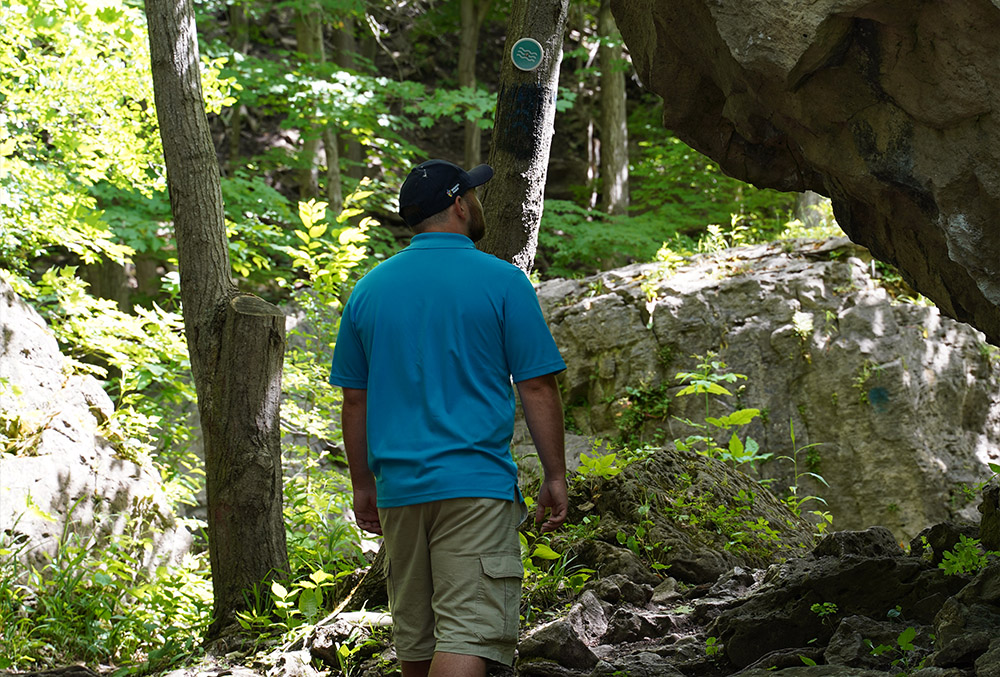Trail Etiquette & Safety
Stay Safe: Follow Trail Etiquette
Safety on the Trails – Video

Working Together
Connecting with nature offers so many health benefits. The paths and trails throughout Niagara Parks are open to pedestrians, walkers, runners, cyclists, hikers and climbers. Being mindful of others and following trail etiquette will help everyone stay safe.
The Natural Environment
The Niagara Glen is home to a unique forest type in Canada called the Carolinian Forest. This type of forest is characterized by a greater diversity of plants, especially broad-leaved trees associated with warmer climates.
The large boulders that you see in the Niagara Glen are relics of the rapid erosion that occurred (and still occurs)along the Niagara River.
The fossils you can find on your hike in the Niagara Glen represent a diverse collection of marine life indicating that the rocks in this area formed in an ancient sea.
Delicate mosses and ferns can be found throughout the Niagara Glen. They grow on boulders, cliff walls and the ground.
We ask visitors to respect the natural habitat and only take pictures.


Trail Rating & Classification
The trails throughout the Niagara Glen are classified as “Moderate” with the exception of the Whirlpool Trail, which is considered “Difficult.”
Moderate trails are marked with a blue square symbol. They are suitable for most hikers with basic trail experience and have infrequent obstacles and gently rolling areas with some short, steep sections.
The Whirlpool trail is marked with a black diamond symbol to warn hikers of its higher level of difficulty. This trail is suitable for experienced hikers with its uneven surfaces, various obstacles and steep sections.
Basic safety tips before you go:
- Bring adequate footwear.
Rugged, winding trails can be challenging to navigate. Sturdy, supportive footwear will help prevent injuries. - Pack enough water to ensure you stay well hydrated.
It is essential to make sure you drink enough water while hiking to maintain energy levels. Water needs vary depending on body weight. Drink at regular intervals, roughly one litre for every two hours of hiking. - Know the terrain and know your physical limits.
Some of the trails found throughout the Niagara Glen can be strenuous. Remember, every step you take to descend into the Gorge, is a step you must take to come back up! - Stay away from the water.
The river is beautiful, but it’s fast, it’s deep, and it’s very dangerous. Swimming is NOT permitted. - Leave no trace.
Take only pictures, leave only footsteps. We ask that you do not touch cultural and historic structures or artifacts. Leave rocks, plants and other natural objects as you found them.
Water Safety
Water safety is paramount at Niagara Parks.
The Whirlpool Rapids are rated Class 6. The rapids in the Niagara River are among the most powerful and dangerous in the world. These waters travel at over 40KM per hour. A current this strong can quickly overpower even the strongest of swimmers.
Tips to stay safe:
- Keep a safe distance
Even in the calm-looking spots along the shore, there is a strong undertow that can easily put someone’s life at risk. Undertow is an invisible water current that flows beneath the surface. - Respect the environment
Water levels in the Niagara river change very rapidly and can catch you completely off-guard. Pack a Personal Flotation Device (PFD) if you plan to be near the waterways. - Stay on the trail
We ask that you remain on the sanctioned trails, they are a safe distance from the water. - Avoid slips and trips
The shoreline is uneven and treacherous, lined with jagged rocks and boulders. Know your limits and avoid navigating the shoreline which could lead to accidentally falling into the water.


 Close and
Close and